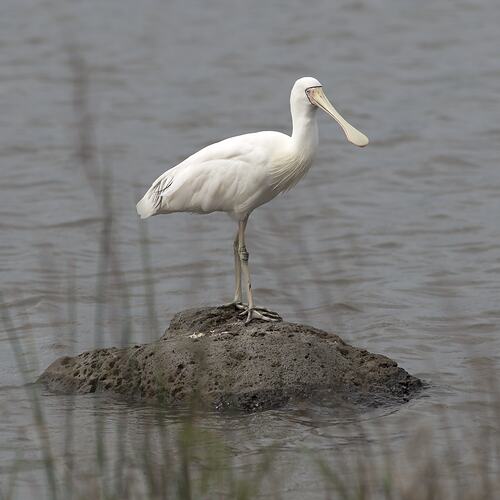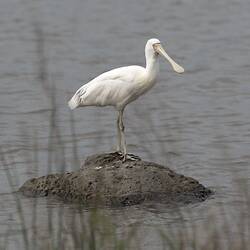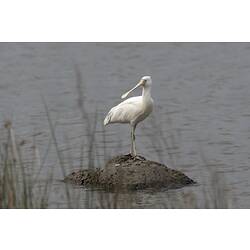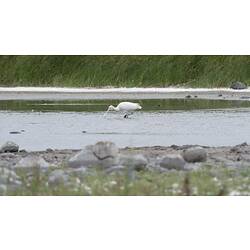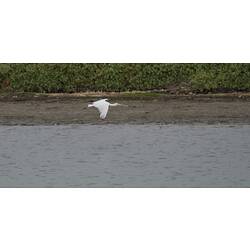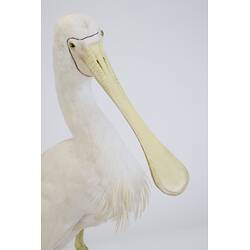General Description
Body white with brown plumes on wings. Legs and feet yellow. Bill yellow and wide with a flat round tip (spoon-shaped). During the breeding season, they have a black outline around the face, black tips on their wing plumes and long breast plumes. The bill to tail length is up to 90 cm. Flies with the neck, head and legs extended.
Biology
Spoonbills feed by sweeping their bill sideways through shallow water to search for crustaceans and aquatic insects. They have sensory structures on the inside of their bill to help detect vibrations given off by prey. This helps them to feed by day or night and in muddy waters. When prey is caught, spoonbills lift their bill up allowing food to slide down their throat. Yellow-billed Spoonbills roost in trees and nest once or twice a year. They nest in colonies, commonly with other waterbirds including other spoonbill species, herons, cormorants and ibises. Nests are a platform structure made of sticks, usually in the fork of a tree over water or in reed beds. Females build the nest from materials collected by the male. The usual clutch size is two to four eggs. They are nomadic, moving in response to rain.
Distribution
Mainland Australia except the western deserts. Irregular visitors to Tasmania.
Habitat
Freshwater wetlands, swamps, lagoons and dams. Occasionally saline wetlands.
More Information
-
Animal Type
-
Animal SubType
-
Brief Id
A large white waterbird with a yellow spoon-shaped bill and yellow legs. Generally seen wading slowly through shallow waters.
-
Colours
White, Black, Yellow
-
Maximum Size
90 cm
-
Habitats
-
Diet
Carnivore
-
Diet Categories
Crustaceans
-
Endemicity
-
Commercial
No
-
Conservation Statuses
CITES: Not listed, FFG Threatened List: Not listed, EPBC Act 1999: Not listed, IUCN Red List: Least Concern
-
Taxon Name
-
Common Name
Yellow-billed Spoonbill
-
Kingdom
-
Phylum
-
Subphylum
-
Class
-
Order
-
Family
-
Genus
-
Species Name
flavipes
